
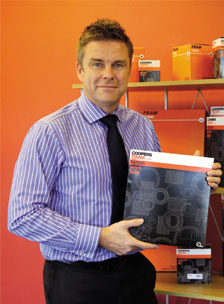 Nigel Duffield, Sogefi Aftermarket Sales Manager for UK & Ireland, highlights the best practice basics for successful filter replacement.
Nigel Duffield, Sogefi Aftermarket Sales Manager for UK & Ireland, highlights the best practice basics for successful filter replacement.
Oil filters
Replacement rules
■ Always use suitable tools for the type of filter
■ Where there is a seamed cartridge, clean the gasket contact surfaces and oil the gasket on the cartridge
■ Take care not to crush or twist any O-rings
■ Observe the tightening torques (manual tightening on seamed cartridges) and the specific precautions
■ Always keep a clean cloth close at hand to collect/dry any excess oil
Keep in mind:
Depending on the vehicle usage and the condition of the emptied oil, feel free to recommend more frequent oil changes to the driver.
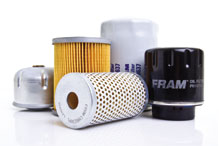
Fast fact:
In 2014, integrated oil filter modules are expected to out-sell spin-on oil filters in the UK for the first time. This is thanks to their extended service intervals, efficiency, extra functions such as oil cooling and pressure monitoring, and easier replacement.
Fuel filters: diesel
Replacement rules
■ Locate all the hoses and connections
■ When there has been heating caused by a fluid, watch out for hot coolant leaks
■ Clean the housing with a clean, lint-free cloth
■ Systematically replace the gaskets and tighten to the torque indicated by the manufacturer
■ Connect the hoses well and allow the engine to run for a few minutes in order to ensure that there are no leaks
■ Prime the pump and remove air from the system
Keep in mind: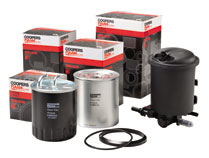 More than for any other filter, replacing a diesel filter requires a clean, dust-free environment.
More than for any other filter, replacing a diesel filter requires a clean, dust-free environment.
Fast fact:
Diesel filter components can be very sensitive to minus temperatures so aim to check them before freezing weather strikes. Inadequate maintenance can lead to the water freezing, blocking the flow of fuel and potentially causing serious damage.
Air filters
Replacement rules
■ Use a vacuum to suck up any residue in the filter housing
■ Using a damp cloth, clean the inside of the housing
■ Ensure that the new filter is the same as the one being replaced, and that it is perfectly sealed at the edges
■ Don’t forget to reconnect any hoses or ducts disconnected previously, for easier filter replacement
Keep in mind: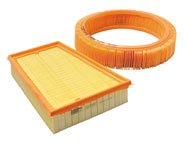 An air filter cannot be cleaned – it must be replaced. This is because the use of compressed air makes the filter more porous, permanently compromising its ability to filter effectively.
An air filter cannot be cleaned – it must be replaced. This is because the use of compressed air makes the filter more porous, permanently compromising its ability to filter effectively.
Fast fact:
For every hour on the road, a car can draw in up to 500 m3 of air. Drivers rely on air intake quality even more during dusty summer weather. Air filters should therefore be changed regularly; only using OE-quality replacements.
Cabin air filters
Replacement rules
■ Identify the position of the filter(s) and ensure that you thoroughly understand the disassembly/assembly procedure
■ Use a vacuum and a damp cloth to remove any residue in the system. If necessary, use an anti-bacterial spray
■ Ensure that the new filter is the same as the one being replaced, and that it is perfectly sealed in its housing
■ After replacement, operate the ventilation/climate control system for a few minutes in order to ensure that there are no noises or leaks
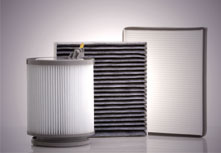
Keep in mind:
The use of an anti-bacterial product on the filter and in the ducts improves comfort for the vehicle’s occupants.
Fast fact:
Fitted as standard to 98% of new vehicles, cabin air filters are soon expected to catch up with oil filters as the biggest-selling replacement filters.









